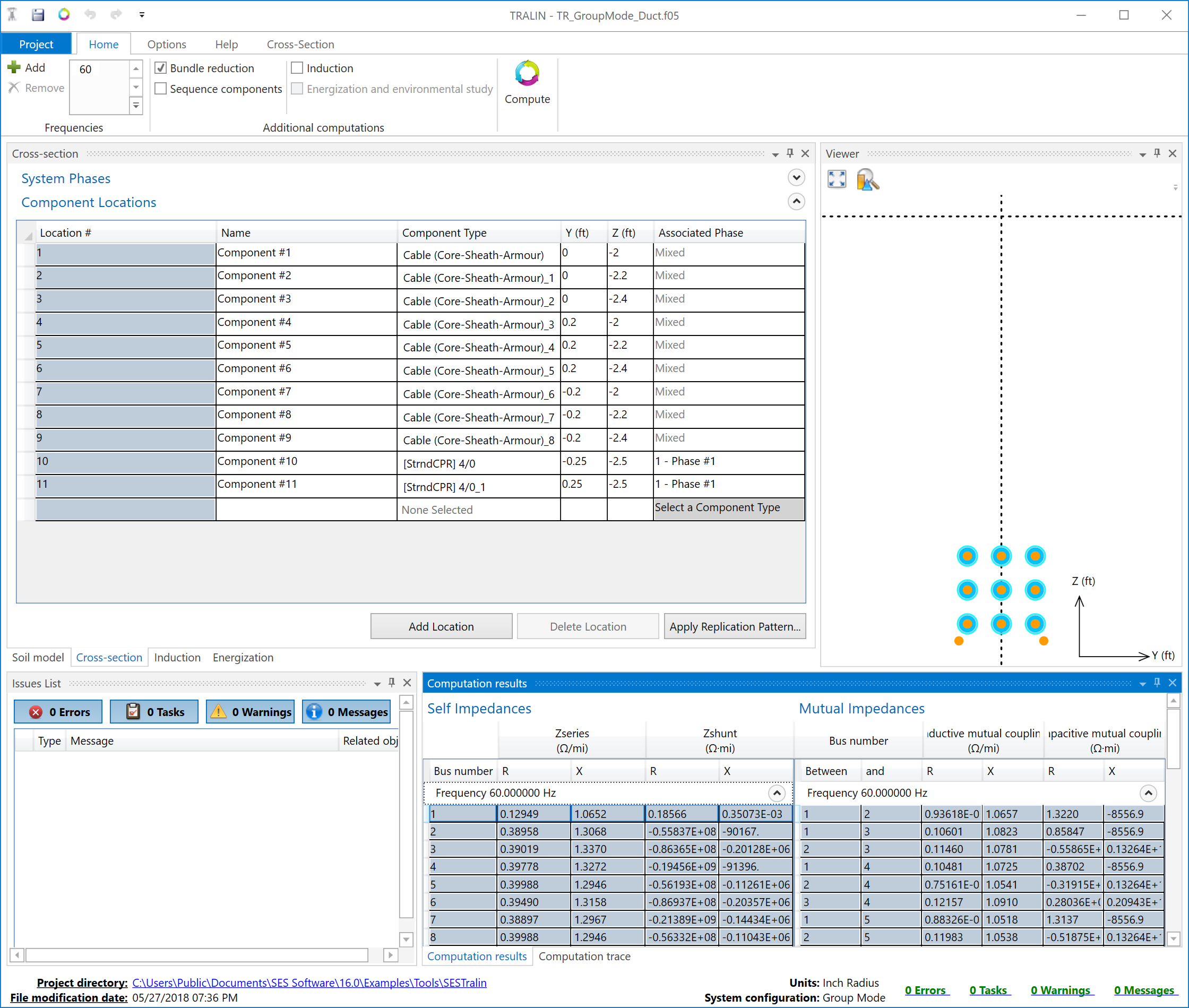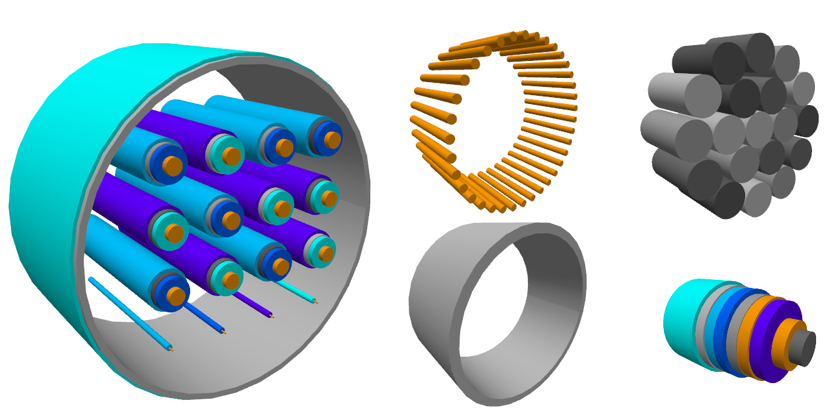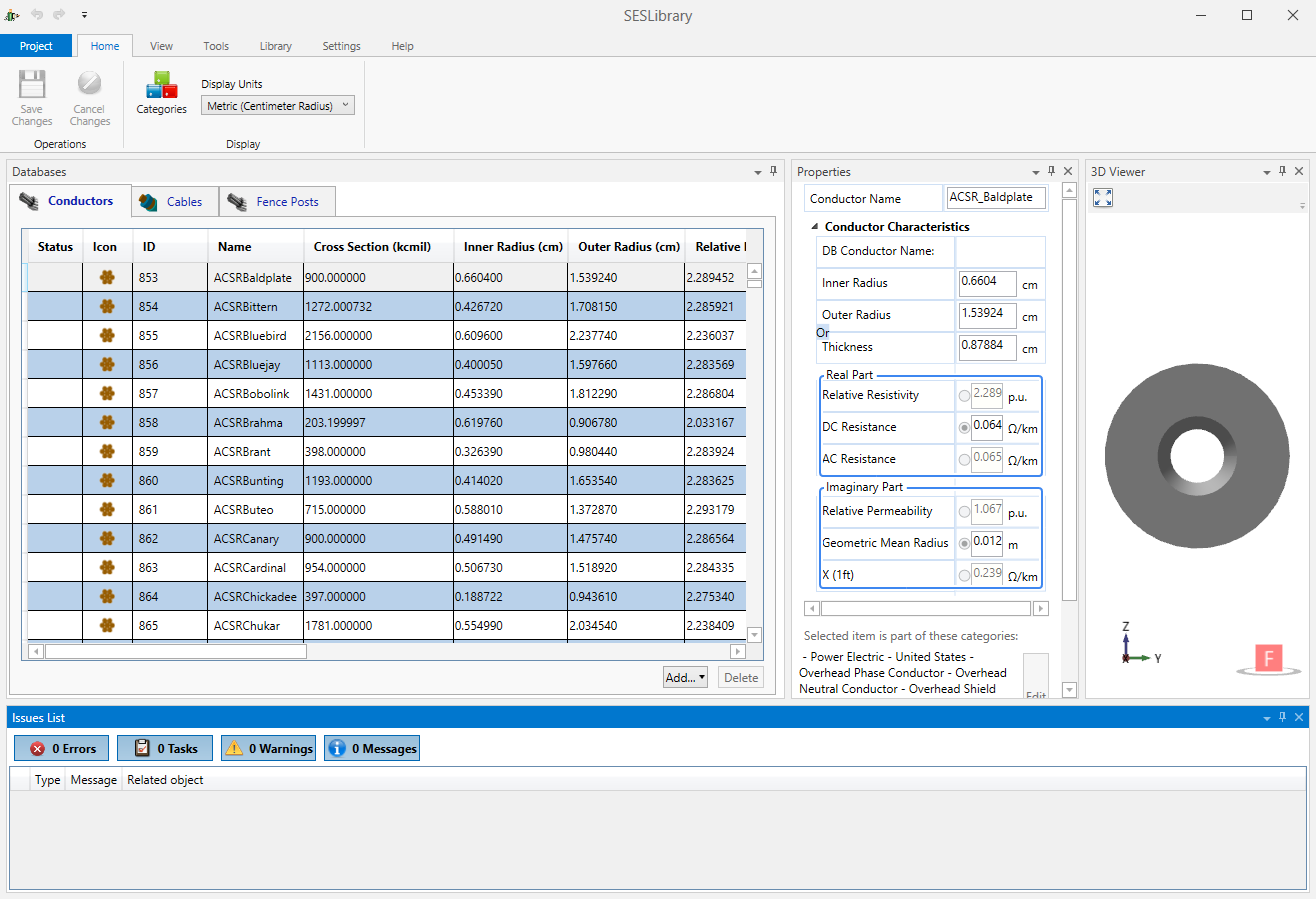The TRALIN computation module determines conductor and cable parameters, electrostatic and electromagnetic induction effects on ungrounded conductors, scalar potential, magnetic field and electric field in the air above a multilayered soil consisting of arbitrary characteristics.
Technical Description
TRALIN computes conductor and cable parameters, electrostatic and electromagnetic induction effects on ungrounded conductors, scalar potential, magnetic field and electric field in the air. TRALIN can be applied to both distribution and transmission lines with any number and type of conductors. TRALIN is one of the main computation modules that drive the
MultiLines
and
Right-of-Way Pro
software packages.

TRALIN main screen showing cross-section of cable duct and a summary of computation results.
Technical Highlights
-
Using TRALIN, you can compute Maxwell potential coefficients, shunt capacitances, self and mutual impedances, symmetrical components, and admittances for all conductors on a per-conductor basis and/or a per-phase basis, with sky wires or static wires being eliminated or treated as distinct conductors, at your option.
-
TRALIN takes into account power frequency, skin effects, and earth characteristics. Specify the thickness, resistivity, permeability, and permittivity of any number of horizontal soil layers.
-
TRALIN can accommodate any arrangement of conductors: pipe-type cables, pipelines, solid, hollow, stranded and composite conductors, insulated and bare conductors, overhead and buried conductors, and irregular phase configurations. All cable conductors can have a core, sheath, armor, and arbitrary insulations. Each of these components can have as many different conducting and insulating layers as required.

Available conductor types (pipe-type cable, circular array, hollow conductor, stranded array and multilayer cable).
Technical Features
-
TRALIN can determine the AC scalar potential and the electric field. These are computed using an original and accurate method called the "Strip Charge Simulation" method. Computations can be made at any set of points both aboveground and below, both on conductor surfaces and elsewhere.
-
TRALIN can calculate the magnetic field at aboveground observation points.
-
TRALIN computes the magnetically induced voltage resulting in one ungrounded conductor based on the currents you specify for the other conductors in the system under analysis. Also computes the electrostatic potential induced in one conductor due to the potentials you specify on the other conductors in the system.
-
For overhead conductor arrangement with little regularity, conductors can be specified one at a time and may be completely different from one another or reused at multiple locations.
-
For regular overhead conductor arrangements, conductor characteristics are specified on a per-circuit basis and phase bundle configuration is specified to reduce data entry time.
-
For systems which include buried conductors such as pipelines and pipe-type cables, conductors can be specified one at a time and may be completely different from one another or reused at multiple locations.
-
An extensive conductor database is available to ease input operations.

Extensive conductor databases.




